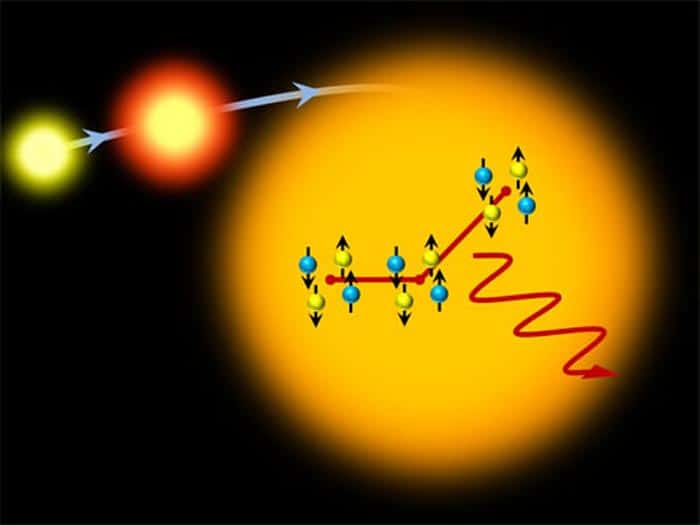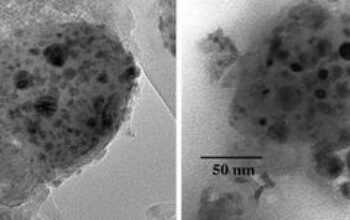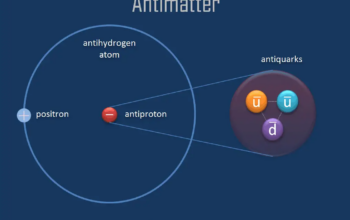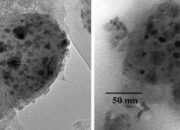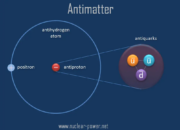In the intricate web of nuclear physics, few concepts capture the imagination like the Hoyle state of carbon, a vital resonance that underpins our very existence. The recent advancements in calculating this elusive state herald profound implications for our understanding of stellar nucleosynthesis and the genesis of life itself. Herein, we delve into the significance of the Hoyle state, its enigmatic properties, and its potential to elucidate the ancient puzzle of life’s origins.
The Fundamental Role of Carbon in Life’s Chemistry
Carbon, with its remarkable ability to form stable covalent bonds, serves as the cornerstone of organic chemistry. The intricate biological molecules—proteins, nucleic acids, carbohydrates—are predominantly carbon-based. The unique tetravalency of carbon allows for an astounding diversity of structures, a property that is fundamental to the complexity of biological molecules. However, the genesis of carbon in our universe is inherently linked to processes occurring within stars, where nuclear fusion transpires.
The Hoyle State: A Key to Carbon Formation
The Hoyle state, named after the renowned physicist Fred Hoyle, is an excited state of carbon-12 that plays a pivotal role in stellar nucleosynthesis. Detected via the triple-alpha process, this phenomenon allows three helium nuclei to combine to form carbon. This process, however, is not straightforward; it requires an extraordinarily precise energy level of the Hoyle state. Specifically, carbon’s stability is finely tuned to facilitate this fusion process, explaining why the universe has a substantial carbon presence necessary for life.
In popular discourse, the concept of the Hoyle state may appear abstract, yet it is a crux of astrophysical phenomena. Any deviation in its energy configuration could render carbon formation exceedingly inefficient, thus inhibiting the creation of complex molecules essential for life. Previous calculations struggled to pinpoint the energy levels of the Hoyle state, technological limitations and theoretical constraints often postulating a range of values with significant uncertainty.
Recent Breakthroughs in Calculating the Hoyle State
Recent calculations have made notable strides in determining the properties of the Hoyle state more accurately, utilizing contemporary computational techniques alongside experimental data. By employing sophisticated models that account for interactions between nucleons, researchers have elucidated the energy level crucial for the Hoyle state. This calculation aligns closely with experimental findings derived from advanced nuclear reaction studies.
The importance of these calculations transcends mere academic curiosity; they enable a deeper understanding of carbon’s formation under cosmic conditions. Moreover, they may dissolve prior discrepancies between theoretical predictions and empirical observations, bringing the field of nuclear astrophysics closer to an integrated theory of elemental formation.
Implications for Astrophysics and Cosmology
The ramifications of resolving the Hoyle state’s energy continue to ripple through various domains of physics. In stellar contexts, an accurate calculation is vital for refining models that simulate supernova explosions, pulsating stars, and the lifecycle of massive stars. Furthermore, insights into the Hoyle state may illuminate the mechanisms by which heavier elements are synthesized within stars, addressing gaps in our current cosmological model.
Additionally, understanding the energy dynamics of the Hoyle state enhances the exploration of primordial nucleosynthesis—the process by which light elements were formed in the early universe. Researchers can thus piece together the narrative of the universe’s inception, offering tantalizing glimpses into the mechanisms that shaped the composition of all matter.
The Connection between Carbon Formation and Life’s Origins
The resolution of the Hoyle state calculation richly intertwines with theories regarding the origin of life. As carbon’s formation is intimately linked to stellar processes, the emergence of carbon-based life forms must also correlate with stellar abundance. Current models posit a very specific set of conditions that allowed for the emergence of complex organic molecules necessary for life, hinging heavily on the availability of carbon. The calculated stability of carbon-12 through the Hoyle state elucidates a crucial piece of this evolutionary puzzle.
This correlation raises intriguing philosophical and scientific questions: Was life destined to emerge in the universe, owing to the fine-tuning of nuclear processes? Can we attribute the presence of carbon-based life on Earth to random cosmic events influenced by the Hoyle state? Such questions propel ongoing discourse in both astrobiology and cosmology, inviting interdisciplinary dialogue as scientists grapple with understanding the phenomena that led to life.
Future Directions and Hypothesis Testing
As the scientific community accordingly embraces the refined calculations of the Hoyle state, future research endeavors are poised to investigate various related hypotheses. The exploration into isotopic variations and their potential influences on biochemical pathways will take precedence, allowing broader insights into how diversity in carbon isotopes might affect life’s complexity.
Additionally, studying the implications of the Hoyle state may lead to innovative experimental protocols that unveil new aspects of nuclear physics. Collaboration between astrophysicists, chemists, and biologists could yield comprehensive frameworks for investigating life’s origins beyond our solar system, thereby enriching our understanding of biogenesis across varying cosmic environments.
In summary, the recent achievement in accurately calculating carbon’s Hoyle state casts a critical light on the nexus between nuclear physics, elemental synthesis, and the very foundations of life itself. With hope for future discoveries, this milestone reaffirms the profound interconnectedness of the cosmos—where the ballet of atoms weaves together the fabric of existence, illuminating the path to understanding our origins.
